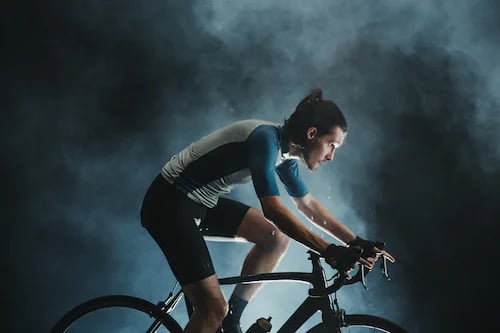We can engage in indoor cycling exercises while the COVID lockdown is in effect. For those who are interested, here are 8 suggestions to think about as you get ready for the most challenging indoor bike climb of your life.
1 - Bring Your Family Aboard
Obtaining support from your family may be the most crucial step. You'll be on your trainer for 10 to 20 hours, which is a significant amount of time spent at home without having much contact with your loved ones. Ideally, plan activities they can enjoy while you are climbing the mountain. You don't want to have to deal with family conflict on top of the challenging physical goal you have in front of you.
2 - Get a Bigger Cassette or Be Prepared for a Tonne of Low-cadence Work.
You must set your smart trainer's difficulty to 100% if you want to be admitted to the everlasting hall of fame. A 13% grade on zwift will therefore appear to be 13% on your trainer. Typically, individuals set this to 50%, making a 13% grade feel like a 7.5%. However, altering the trainer's difficulty is crucial since gearing is necessary. You will be working at a low cadence for most of the climb if you choose a standard road bike cassette, as I did. For most of my ascents, I operated at an rpm of 55 to 60, producing 250 to 270 watts.
I could have easily completed 90+ RPMs at fewer watts if I had a larger cassette (or a mountain bike cassette). The key lesson is to practice an ascent of a 100% trainer difficulty on Zwift before attempting everlasting to ensure that the gearing is correct.

3 - Maintain a Low Heart Rate (below Lt1)
You want to avoid using up all of your glycogen as this is longer than a marathon. You will be able to burn fat and maintain your strength throughout the entire day if you keep your heart rate below Lactate Threshold 1. I typically kept my pulse rate under 130 bpm, and if I could, under 120. Your heart rate will probably start to increase during the next couple of hours no matter what you do, but the trick is to keep it under control as long as you can.
4 - Eat Lots and Drink a Lot!
Calories are yet another aspect of success. This eating competition is comparable to those found in endurance sports. You don't have to worry about logistics, and every time you descend, you get a 10-minute respite. Now is the moment to master your nutrition completely.
Following is a list of the foods I consumed:
5 bananas, or around 1 every hour.
A large number of gummy bears because we had them in our home. A complete bag of dates.
8 bottles of my home-made Infitit Go Far-style energy drink (300 calories per bottle)
8 bottles of another homemade energy beverage that tastes like Gatorade (150 calories per bottle)
Several other unrelated items that I recently consumed but can't recall
All things considered, I consumed 5000–6000 calories with ease. I wouldn't consume that amount during a race, and I had no gastrointestinal problems. Furthermore, there was no stress. The meal would be on the table right next to me if I didn't want to eat straight away.
5 - Ask Friends to Support You by Riding One or Two Ascents with You.
Together, climbing Everest is just more enjoyable. Together, you may speak and exercise. I communicated with others who were climbing the Alpe du zwift 8.5 times that day via discord, text messages, and swift chat. I did, however, have a lot of pals who sent their best wishes and even joined me on a few ascents of the mountain while using zwift. That gave me so much motivation. Putting out a few more watts becomes simpler when your new companion joins you and you're on ascent number.

6 - a Good Pair of Bike Shorts and Chamois Cream Are a Must
Even if you are physically fit and resilient, saddle sores can still incapacitate you. Make sure your rear is properly equipped.
7 - Get Up Early, but Sleep Somewhere Prior
I started riding shortly after 4 am, so it's been a long day. My buddies who started at midnight include a few. I think it would be dangerous to "travel through the darkness." Prior sleep is necessary for me to feel well during the day. Conclusion: understand how your body works, and if you can, try to get 7-8 hours of sleep the night before.
8 - Seek Distractions to Help You Remain Positive
Large tv with Netflix was undoubtedly helpful to me. I finished reading "the letter for the king" in its entirety (it was decent – just good enough to distract me on a couple of ascents). Then I began looking for some entertaining youtube video fail collections that I could watch while listening to other music through my headphones. Finally, on the final ascents, all I could hear was loud exercise music that encouraged me to move forward. Find enough entertainment to keep you occupied for several hours as you spin.


